Kashmir, in the context of Pakistan-administered territory, comprises two distinct regions: Azad Jammu and Kashmir (AJK) and Gilgit-Baltistan (GB). However, this travel guide will primarily focus on Azad Jammu and Kashmir (AJK), a semi-autonomous region governed by Pakistan.
Azad Jammu and Kashmir is bordered:
-
To the east by Indian-administered Jammu and Kashmir,
-
To the north by Gilgit-Baltistan,
-
To the west and south by Pakistan’s Punjab province and Khyber Pakhtunkhwa (KP).
The administrative capital of AJK is Muzaffarabad, and the territory is approximately 13,300 square kilometers in size.
What unique geological features define the region?
Kashmir is one of the most geologically dynamic regions in South Asia. Located in the collision zone of the Indian and Eurasian tectonic plates, it is part of the Western Himalayan Range. This tectonic activity results in frequent seismic events and the formation of stunning mountainous terrain.
Some key geological features include:
-
High mountain ranges: Pir Panjal Range, Shounter Range, and parts of the Western Himalayas
-
Deep river valleys: Neelum, Jhelum, and Leepa rivers carve their way through thick forests and steep slopes
-
Glacial lakes: Such as Ratti Gali and Chitta Katha
-
Fertile plateaus and meadows: Especially in Leepa and Rawalakot
The region is rich in mineral resources including limestone, graphite, coal, and marble, although large-scale extraction is limited due to the terrain and remoteness.
How does the landscape vary across different districts?
Azad Jammu and Kashmir is administratively divided into 10 districts, and each presents distinct geographic characteristics.
1. Muzaffarabad District
-
Capital city, nestled between the Neelum and Jhelum Rivers
-
Surrounded by steep hills and prone to landslides and earthquakes
-
Entry point to Neelum Valley
2. Neelum District
-
A narrow valley running parallel to the Line of Control (LoC)
-
Densely forested with cedar, pine, and fir trees
-
Features alpine lakes and waterfalls; terrain becomes rugged near Taobat
3. Bagh District
-
Hilly terrain with pine forests and moderate elevation
-
Known for Ganga Choti, a trekking peak offering panoramic views
4. Rawalakot (Poonch) District
-
Known as the “Pearl Valley”
-
Broad green meadows, plateaus, and mild elevation
-
Less rugged, more suitable for family tourism
5. Sudhnoti and Kotli Districts
-
Low hills and valleys with subtropical vegetation
-
Closer to the plains of Punjab; warmer climate
6. Haveli District
-
High-altitude and mountainous
-
Borders Indian-administered Poonch; terrain is steep and forested
7. Mirpur District
-
Comparatively flat and developed
-
Features Mangla Dam, one of the largest earth-filled dams in the world
8. Bhimber District
-
Located on the southern edge of AJK
-
Historic trade route with archaeological sites
9. Jhelum Valley (Hattian Bala)
-
Winding along the Jhelum River with gentle hills and scenic views
-
Popular for riverside retreats and local culture
The landscape transitions from rolling plateaus and subtropical plains in the south (Mirpur, Kotli) to towering alpine regions in the north (Neelum, Leepa, Shounter). These varying terrains contribute to the diverse travel experiences Kashmir offers—from hiking and trout fishing to relaxed lakeside vacations.
Climate Zones
Kashmir’s geography supports three broad climate zones:
-
Subtropical zone in lower altitudes (Mirpur, Kotli, Bhimber)
-
Temperate zone in middle elevations (Rawalakot, Bagh, Muzaffarabad)
-
Alpine and glacial zone in high-altitude northern areas (Neelum, Leepa)
Seasonal variations include heavy snowfall in winter (Dec–Feb), lush greenery and blooming valleys in spring (Mar–May), and cool summers (Jun–Aug) ideal for mountain exploration. Autumn (Sep–Oct) offers crisp air and golden-hued forests.
Top 20 Destinations in Kashmir, Pakistan
1. Muzaffarabad – The Cultural Heart of AJK

Nestled at the confluence of the Neelum and Jhelum Rivers, Muzaffarabad serves as the vibrant capital of Azad Jammu and Kashmir. The city blends scenic splendor with historic richness, making it an ideal starting point for any Kashmir adventure.
Key Attractions:
-
Red Fort (Chak Fort): A 16th-century Mughal-era fortification, offering panoramic views over the river and city.
-
Pir Chinasi (via road from Muzaffarabad): A 2,900-meter-high peak offering spectacular trekking opportunities and spiritual serenity.
-
Domel Point: The stunning convergence of the Neelum and Jhelum Rivers is a peaceful spot for reflection or photography.
Traveler Experience:
Muzaffarabad is more than a transit hub; it’s a destination where travelers can immerse themselves in Kashmiri culture, enjoy authentic local cuisine, and explore traditional bazaars. The city also offers some of the most reliable accommodations and serves as the logistical launchpad for northern excursions like Neelum Valley and Ratti Gali.
2. Neelum Valley – The Crown Jewel of Kashmir
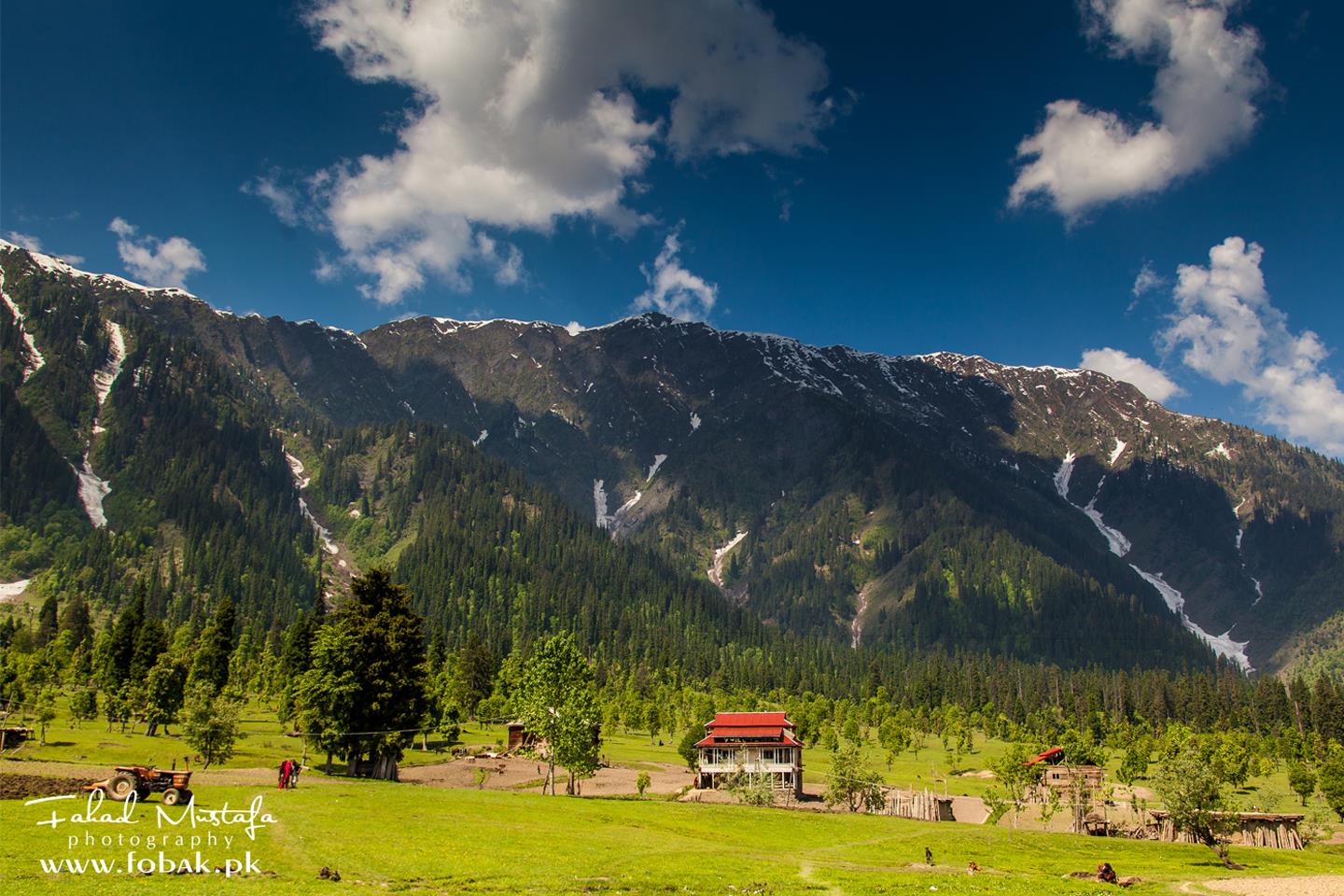
Known as the “Switzerland of Pakistan,” Neelum Valley stretches for over 240 km along the Neelum River and offers some of the most stunning natural vistas in South Asia.
Highlights:
-
Keran and Upper Neelum: Twin villages known for riverbank cottages and majestic views of Indian-administered Kashmir.
-
Sharda: Home to the Sharda Peeth ruins, an ancient Hindu university and temple complex.
-
Kel and Taobat: The last settlements near the Line of Control (LoC), rich in alpine meadows and glacial streams.
Unique Experiences:
From trout fishing in icy rivers to hiking through untouched forests, Neelum Valley offers nature in its rawest form. Spring and summer are best for sightseeing, while autumn turns the valley into a painter’s palette of golden hues.
3. Ratti Gali Lake – The Alpine Gem

Perched at an altitude of 12,130 feet, Ratti Gali Lake is an alpine glacial lake surrounded by snow-capped peaks and lush flower-laden meadows. Accessible via a moderate jeep track and a 1–2 hour trek from Dowarian in Neelum Valley, the journey itself is as rewarding as the destination.
Main Features:
-
Mirror-like lake reflection of surrounding mountains
-
Summer blooms of Himalayan blue poppies, daisies, and irises
-
Nearby camping sites and trekking base camps
What Makes It Special:
Ratti Gali is a must for adventure seekers and nature lovers. It’s only accessible during summer (mid-June to mid-September), and due to its fragile ecosystem, visitors are encouraged to follow strict eco-tourism guidelines. Night skies here offer stargazing opportunities rarely found elsewhere.
4. Shounter Valley – Wild and Untamed
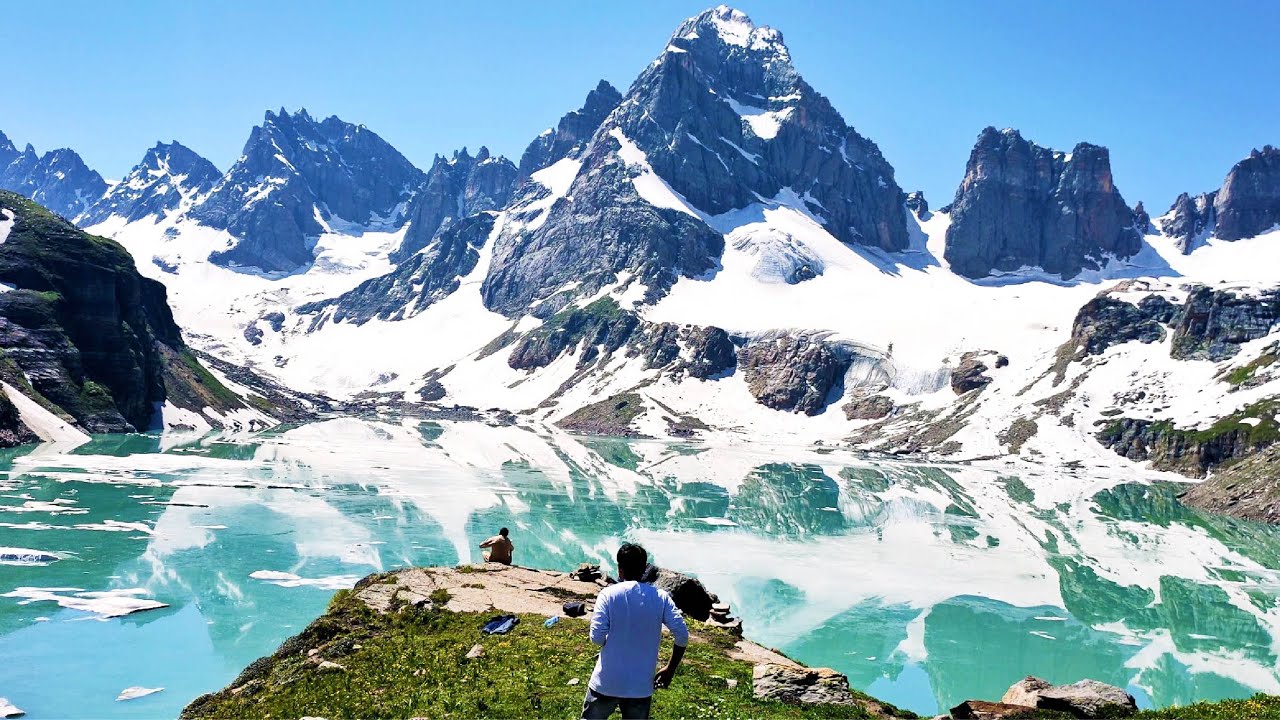
Shounter Valley, a hidden offshoot of Kel in Upper Neelum, is a raw, untouched marvel located deep in the Himalayan foothills. It offers travelers an off-the-beaten-path experience filled with towering waterfalls, glaciers, and mysterious highland passes.
Key Attractions:
-
Shounter Lake: A small emerald lake surrounded by vertical cliffs and glaciers
-
Shounter Pass (to Astore, Gilgit-Baltistan): An ancient trade and trekking route only for seasoned trekkers
-
Challenging Jeep Tracks: Reaching this valley itself is an adventure
Experience:
What sets Shounter apart is its isolation and silence. There are no resorts, only wooden cabins and tents, giving travelers a taste of nomadic mountain life. It’s best for campers, trekkers, and those seeking complete disconnection from urban life.
5. Leepa Valley – The Verdant Utopia

Accessible from Reshian via a steep mountain road, Leepa Valley is one of the most scenic and agriculturally rich valleys in AJK. At 1,921 meters above sea level, it’s surrounded by high ridges and dense forests.
Highlights:
-
Leepa Village: Known for its wooden Kashmiri homes and terraced fields
-
Hanjna and Reshian: Villages famous for apple orchards and golden paddy fields
-
Chananian: A peaceful lakeside town near the LoC
Unique Experience:
Leepa is ideal for cultural immersion. Visitors can experience authentic Kashmiri village life, enjoy home-cooked meals, and stroll through fields of corn and mustard. In autumn, the valley glows with fiery oranges and reds, making it a photographer’s paradise
6. Pir Chinasi – A Peak of Serenity and Spirituality

Located about 30 kilometers from Muzaffarabad at an elevation of 2,900 meters, Pir Chinasi is one of the most accessible and panoramic viewpoints in Azad Jammu and Kashmir. The drive up winds through pine-covered slopes and lush valleys, culminating at a hilltop shrine that overlooks vast mountainous expanses.
Highlights:
-
The shrine of Saint Pir Shah Hussain Bukhari, a site of local religious significance
-
Sweeping views of Muzaffarabad city, the Jhelum River, and even glimpses of Indian-administered Kashmir on clear days
-
A launchpad for paragliding, hiking, and snow-based activities in winter
Pir Chinasi is best visited between May and October. During the summer, it’s a cool escape from the city, while winter turns the peak into a snow-covered spectacle. The combination of spirituality, scenery, and mild adventure makes Pir Chinasi a must-visit for families and solo travelers alike.
7. Rawalakot – The Pearl Valley
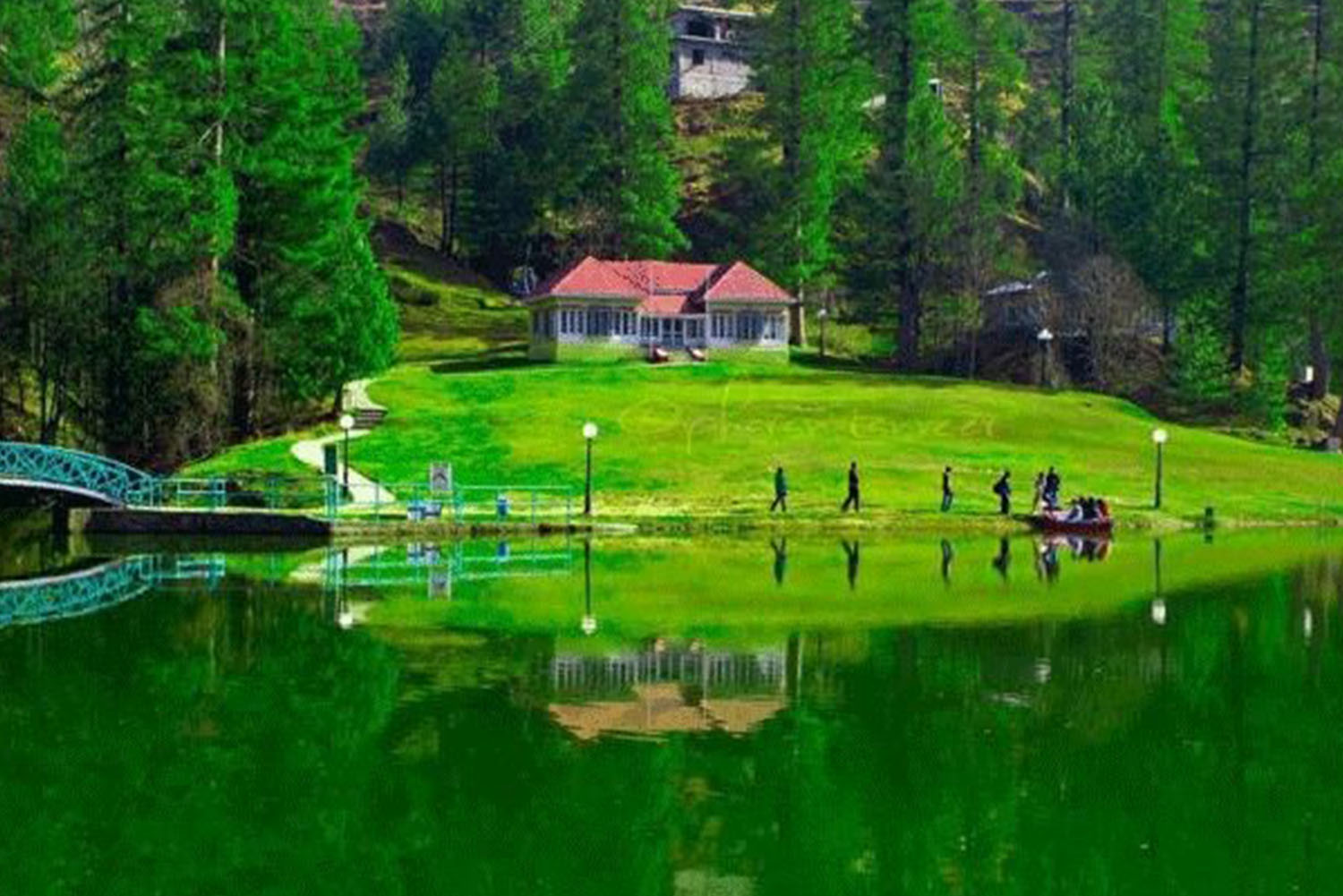
Often referred to as the “Pearl Valley” due to its blooming spring landscape and glistening hills, Rawalakot is a lively town located in the Poonch division of AJK. At 1,638 meters above sea level, it’s surrounded by forested hills and dotted with tourist-friendly villages and picnic spots.
Key Attractions:
-
Paniola and Tatta Pani: Natural hot springs and grassy meadows ideal for relaxing
-
Local bazaars: Selling handwoven shawls, dry fruits, and Kashmiri handicrafts
-
Tranquil weather year-round, making it a popular summer retreat
Rawalakot offers a gentle introduction to AJK for first-time travelers. Its infrastructure is well-developed, with hotels, restaurants, and roads offering comfort and accessibility. The area also serves as a base for day trips to Banjosa Lake and Toli Peer.
8. Banjosa Lake – Man-Made Tranquility Amidst Nature

About 20 kilometers from Rawalakot, Banjosa Lake is an artificial lake surrounded by dense pine forests and rolling hills. At 1,981 meters above sea level, it offers a perfect mix of natural serenity and visitor convenience.
Attractions:
-
Boating and paddleboarding on calm waters
-
Family-friendly picnic areas and forest trails
-
Cottage accommodations and campsites nearby
Developed as a recreational hub, Banjosa Lake attracts families, couples, and photography enthusiasts. The lake remains accessible throughout the year, though it’s most vibrant during spring and early autumn. It’s ideal for travelers seeking relaxation without extensive trekking or altitude challenges.
9. Toli Peer – A Sky-High Meadow with Panoramic Views
Toli Peer is a high-altitude meadow located near Rawalakot, standing at approximately 2,666 meters. Known for its open green pastures, panoramic ridgelines, and constant cloud cover, it offers one of the most breathtaking 360-degree views in Kashmir.
Notable Features:
-
Rolling grasslands perfect for picnics and casual walks
-
Views of Abbaspur, Bagh, and Indian Kashmir on clear days
-
Wildflowers bloom from April to July, creating a colorful contrast against the surrounding greenery
Due to its height, Toli Peer is only accessible from late spring to early autumn. The final leg of the road can be bumpy, but the rewards are well worth the effort. Local vendors often sell tea and snacks at the summit, and horse rides are available for those looking to explore the ridgeline further.
10. Sudhan Gali – A Hidden Haven for Hikers
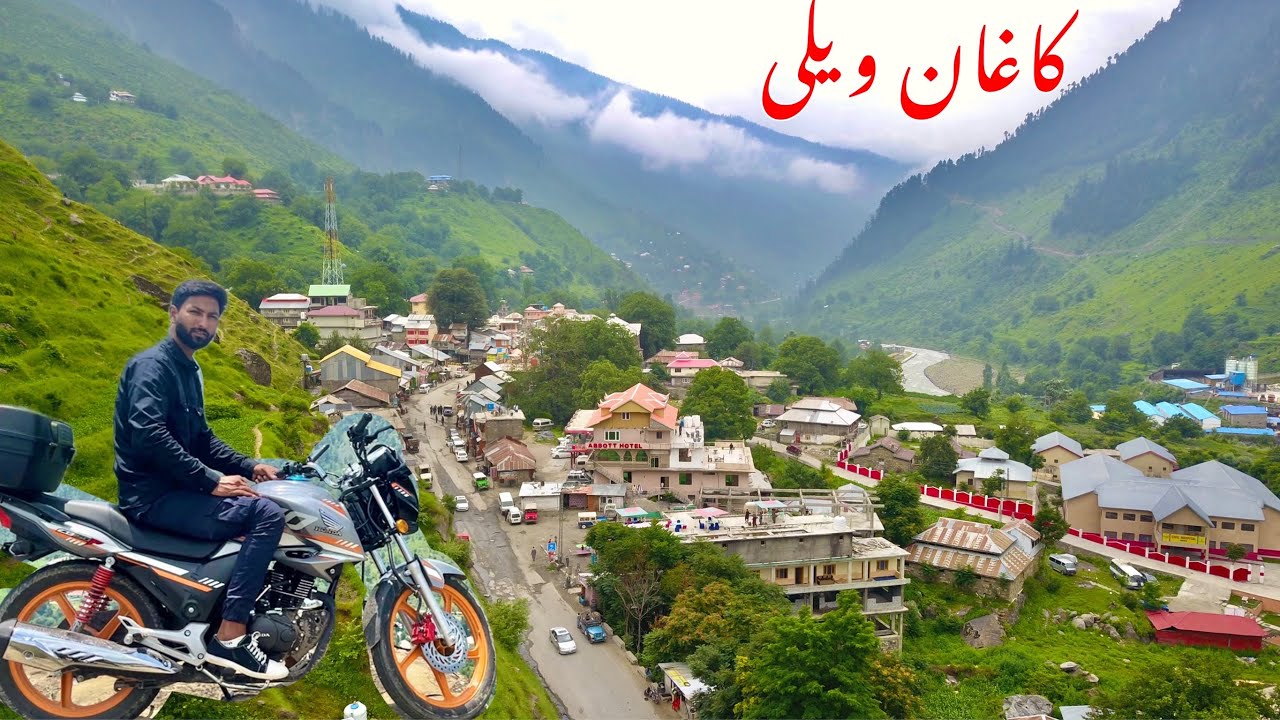
Sudhan Gali is a quiet mountain village located at 2,134 meters above sea level between Chikar and Bagh, serving as the base camp for treks to Ganga Choti. Surrounded by forested hills and alpine meadows, this destination is a favorite among nature lovers and hikers.
Key Attractions:
-
Base for Ganga Choti Trek, one of the most scenic in the region
-
Lush forests and serene picnic areas
-
Cooler temperatures and fewer crowds than other valleys
Sudhan Gali remains an underrated destination, making it ideal for travelers seeking tranquility and off-the-grid adventures. Accommodations are basic but comfortable, and the area is particularly captivating in late spring and early fall when the trails are dry and the foliage is vibrant.11. Jhelum Valley – A Serene River Corridor
Stretching along the picturesque Jhelum River, the Jhelum Valley (also known as Hattian Bala Valley) is one of AJK’s most accessible and tranquil areas. Located just 40 kilometers from Muzaffarabad, this valley is known for its moderate elevation, natural beauty, and hospitable villages.
Top Attractions:
-
Garhi Dupatta: A riverside town ideal for scenic photography and local food
-
Chikkar and Loon Bagla: Mid-altitude picnic spots with cool breezes and pine-covered ridges
-
Spring water streams and forest trails ideal for leisurely hikes
What sets Jhelum Valley apart is its gentle landscape and easy road access, making it a perfect destination for families and older travelers. Local guesthouses offer homely hospitality, and the river offers opportunities for light fishing and boating. Spring and early summer are ideal times to visit when the valley is blooming and the weather is mild.
12. Ramkot Fort – History on the Edge of Mangla Lake
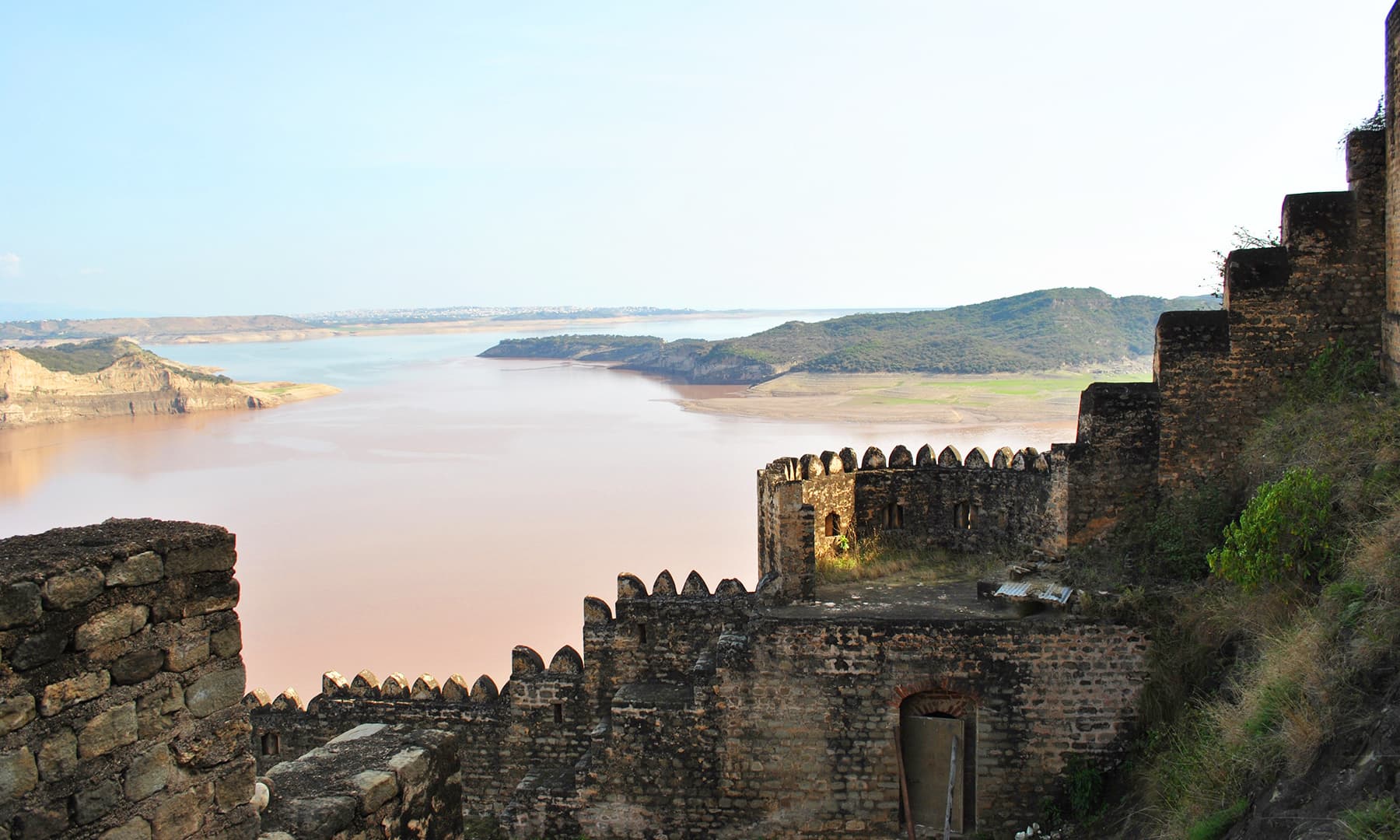
Perched dramatically on a hilltop overlooking Mangla Lake, Ramkot Fort is one of Kashmir’s most historically and architecturally significant landmarks. The 16th-century structure is accessible only by boat from the Mangla Water Sports Club, adding a sense of adventure to your historical exploration.
Highlights:
-
Massive fort walls and battlements with panoramic views of the lake
-
Intricate Indo-Muslim architectural influences
-
Proximity to Mirpur, offering well-developed tourist facilities
Ramkot Fort is a rare example of intact Mughal military architecture in Kashmir and offers unmatched lake vistas. A visit here blends history, nature, and light adventure. Early morning or late afternoon visits are best to avoid the heat and catch the best light for photography.
13. Dhani Waterfall – The Tallest Waterfall in AJK
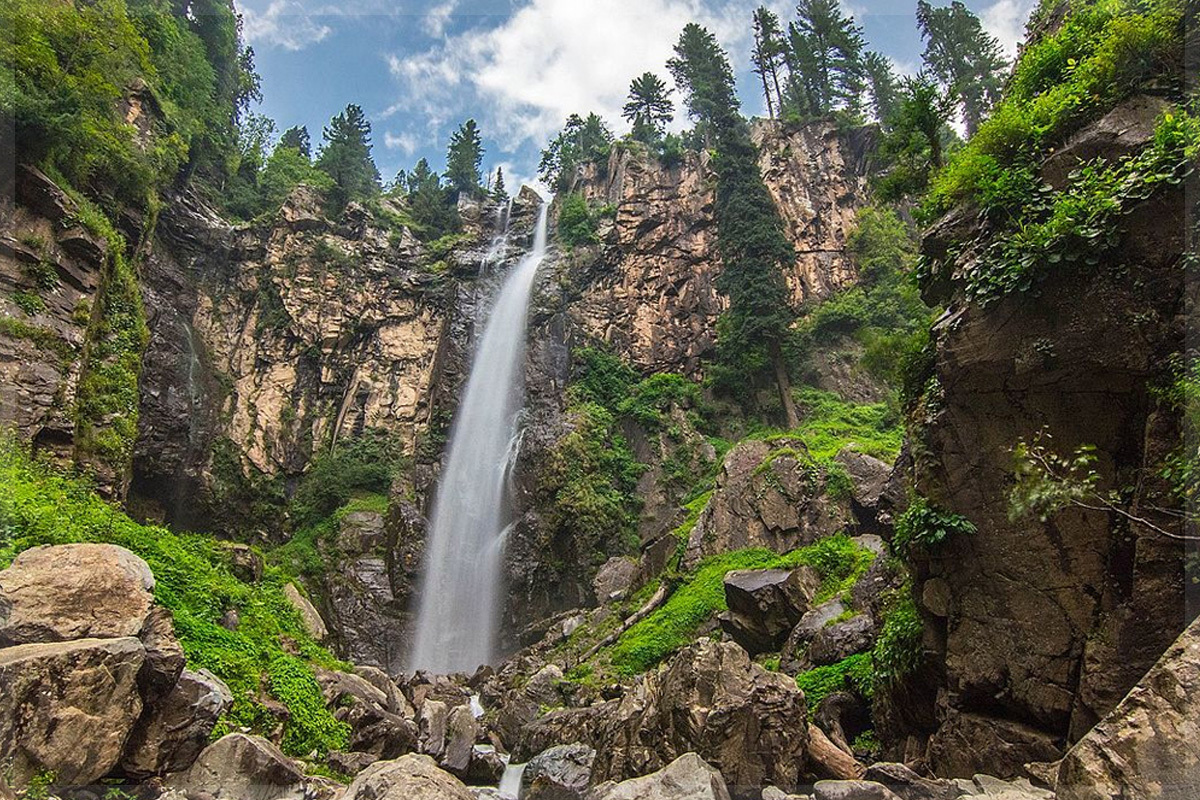
Located about 30 kilometers from Muzaffarabad on the Neelum Valley road, Dhani Noseri Waterfall is the tallest waterfall in Azad Jammu and Kashmir, plunging from a height of over 15 meters. This natural marvel is a popular day trip stop for travelers heading to the upper Neelum region.
Key Features:
-
Scenic road journey along the river and cliffs
-
Ideal for short hikes and photography
-
Tea stalls and sitting areas built by local vendors
Dhani Waterfall is most active and impressive from April to July, when snowmelt feeds the cascade. While swimming is discouraged due to strong currents, visitors can enjoy the surrounding natural environment, take short walks, and photograph the mist-filled air around the base of the falls.
14. Keran – A Border Village with Dual Perspectives

Keran is a small, picturesque village located along the Neelum River, just 93 kilometers from Muzaffarabad. What makes Keran particularly captivating is its proximity to the Line of Control, where travelers can see Indian-administered Kashmir across the river.
Attractions:
-
Cozy riverside cottages and wooden guesthouses
-
Peaceful riverbank walks
-
Reflection of Indian Kashmir’s villages across the water, creating a unique cross-border visual
Keran is ideal for couples and families looking to experience peace, isolation, and natural charm. Travelers often spend one or two nights here while en route to Sharda or Kel. The area remains peaceful and well-guarded, making it safe for tourism despite its sensitive location.
15. Arang Kel – The Balcony of Neelum Valley
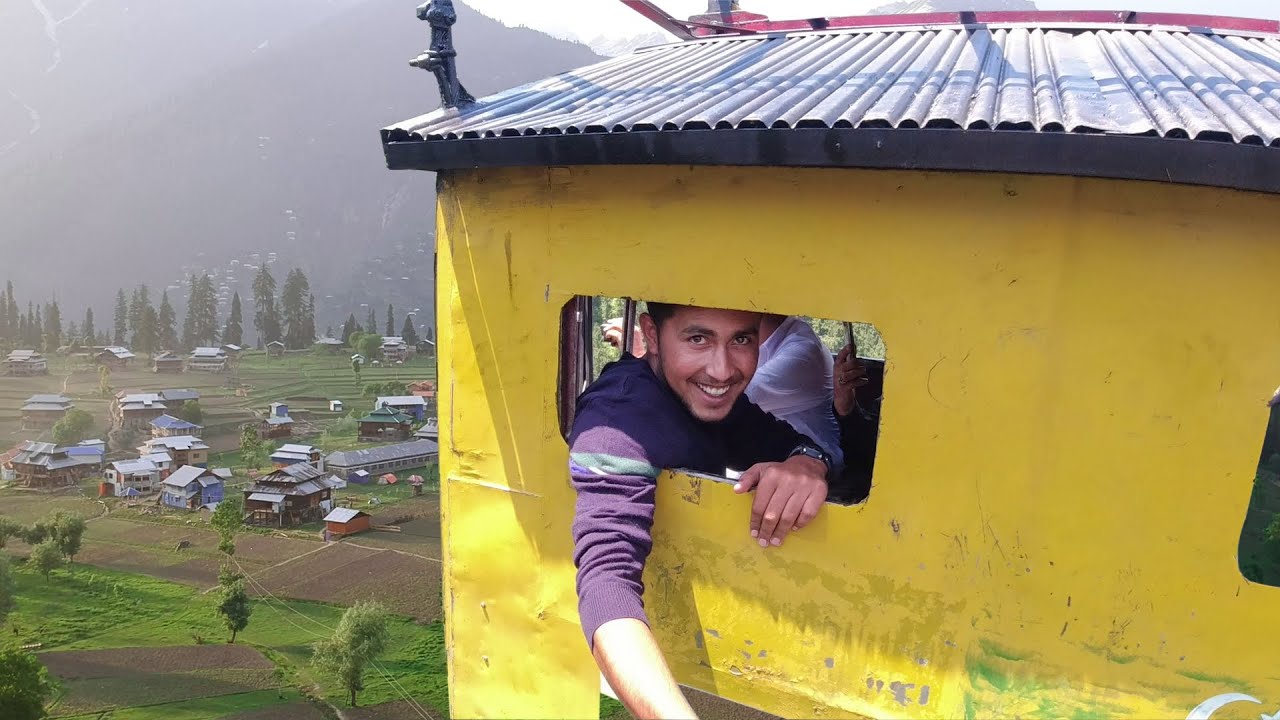
Accessible only by a steep hike or a chairlift from the town of Kel, Arang Kel is one of the most mesmerizing hilltop meadows in Kashmir. Often called the “Heaven on Earth”, this village is perched at over 8,000 feet and surrounded by conifer forests and panoramic ridgelines.
Why Visit:
-
Breathtaking trekking trails and alpine views
-
Wooden cottages with open mountain vistas
-
Local wildlife including Himalayan monal and foxes
Arang Kel is an essential stop for nature lovers and trekkers. It’s best visited between May and September, when the trail is clear of snow and the meadow is green. The ascent to Arang Kel can be physically demanding, but the reward is a landscape that feels entirely untouched by modernity.
16. Sharda – History, Spirituality, and Scenic Beauty
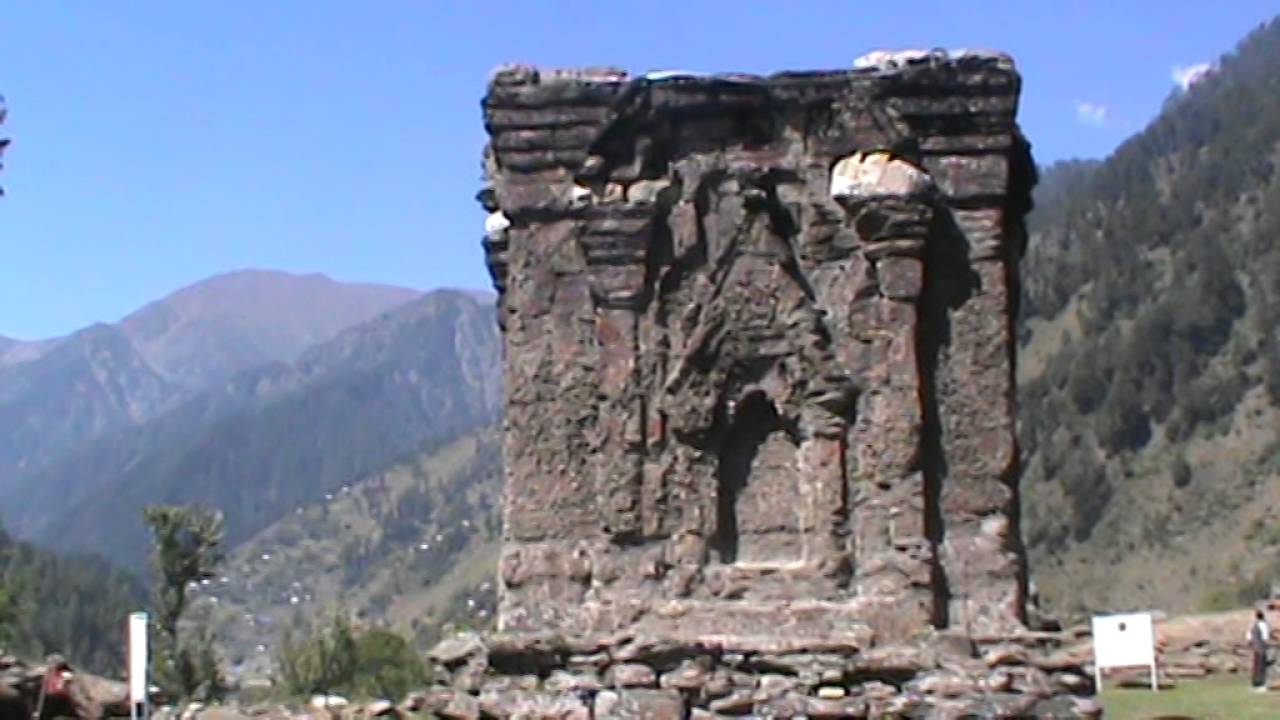
Sharda, located in the upper Neelum Valley, is not just a place of scenic wonder—it is also one of the most historically significant sites in Azad Jammu and Kashmir. This small town is situated along the banks of the Neelum River, around 136 kilometers from Muzaffarabad.
Highlights:
-
Sharda Peeth ruins: Once a thriving center of learning and Hinduism, dating back to the 9th century
-
Historic wooden mosque, reflecting regional architecture
-
Sharda Bridge: A suspension bridge offering stunning river views and photo opportunities
Surrounded by snow-capped peaks and lush forests, Sharda is a unique blend of natural beauty and cultural heritage. It’s also a great base for trips to Kel and Arang Kel. The best time to visit is from May to October, when the route is accessible and the weather is pleasant.
17. Kel – Gateway to the High Himalayas
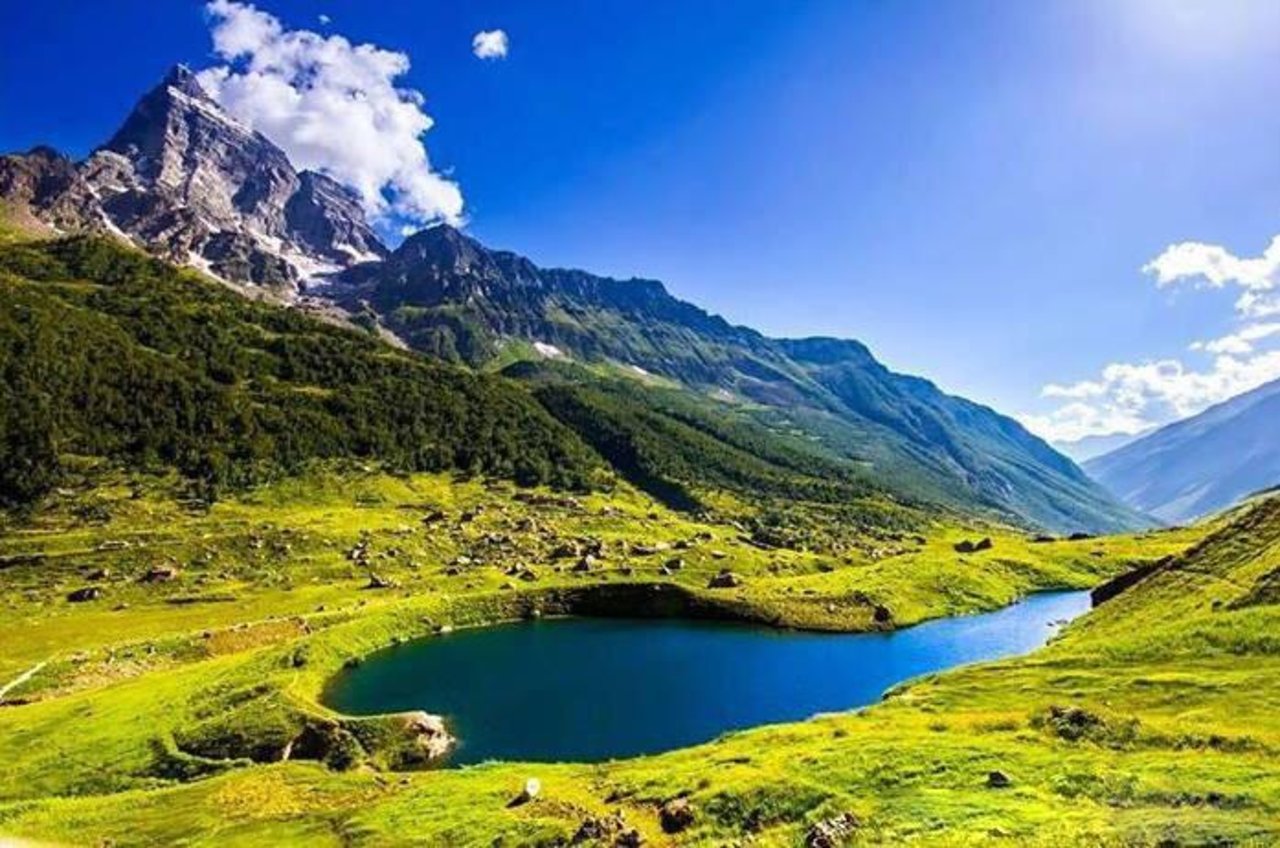
About 19 kilometers from Sharda lies Kel, a high-altitude village that acts as the last major settlement before the remote stretches of upper Neelum Valley. Sitting at nearly 2,097 meters, Kel is surrounded by towering mountains and alpine scenery.
Key Attractions:
-
Starting point for treks to Arang Kel and Chitta Katha Lake
-
Simple wooden lodges with incredible sunrise views
-
Access to Shounter Valley, for more adventurous travelers
Kel is popular among trekkers, campers, and photographers. It offers basic but cozy accommodation and a chance to interact with local Kashmiri communities. Though snow can block access in winter, summer travel is ideal for exploring surrounding meadows and forests.
18. Ganga Choti – Trekking Above the Clouds
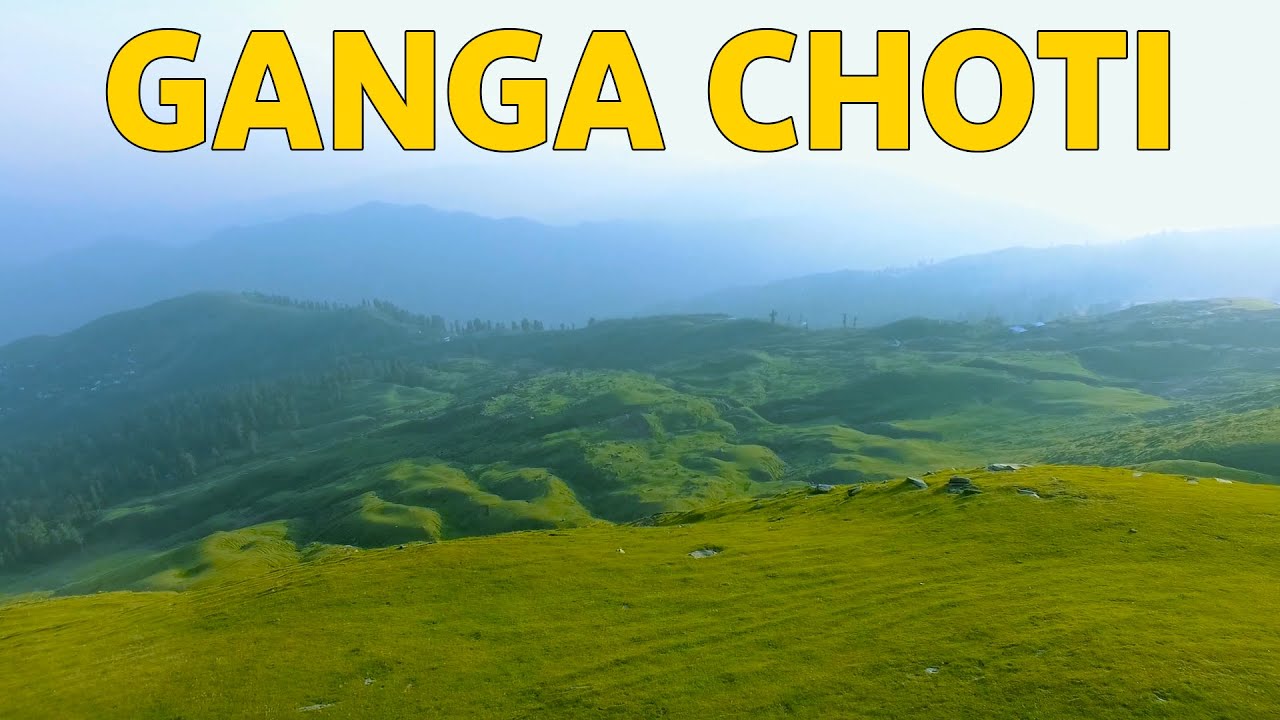
Ganga Choti, rising to 3,045 meters, is one of the most prominent peaks in the Bagh district of AJK. A popular trekking destination, it provides stunning panoramic views over the valleys of Bagh and Rawalakot.
Why It Stands Out:
-
Challenging yet manageable trek from Sudhan Gali, suitable for intermediate hikers
-
Open grasslands and wildflowers in spring and early summer
-
Clear skies offer stargazing and photo opportunities at night
The best time to climb Ganga Choti is between May and September. While there are no facilities at the summit, local guides and porters can be arranged from Sudhan Gali. The experience rewards climbers with solitude, silence, and scenery few other peaks in AJK can match.
19. Taobat – The Last Frontier of Neelum

Located at the northernmost edge of Neelum Valley, Taobat is the last accessible village before the Pakistan-administered region ends. It’s about 39 kilometers from Kel and sits at an elevation of 2,438 meters, surrounded by glacial rivers and pine-covered mountains.
Notable Features:
-
Pristine landscapes and wooden houses with stone rooftops
-
Kishanganga River, a major waterway flowing into Neelum
-
Trails leading into remote alpine territory
Taobat offers a chance to truly escape into the wilderness of Kashmir. It’s ideal for seasoned travelers looking to disconnect. Basic accommodations and tented camps are available, and it’s important to check road conditions, as landslides or snow can affect access.
20. Patikka – Nature’s Gateway Near Muzaffarabad

Located just 17 kilometers from Muzaffarabad, Patikka is often overlooked but serves as a perfect weekend destination for those short on time. It lies at the mouth of Neelum Valley and offers easy access to hiking trails, nature parks, and riverside rest areas.
Key Attractions:
-
Patikka Park: Family-friendly area with picnic spots and viewpoints
-
Short hikes to mini waterfalls and streams nearby
-
Educational eco-centers and local cultural exhibitions
Patikka is best for families, students, and casual travelers who want to experience Kashmir’s natural beauty without venturing deep into the mountains. It’s also an excellent starting point for trips to Neelum Valley and Keran, with plenty of roadside amenities.
Safety Considerations for Traveling in Kashmir, Pakistan
Traveling to Azad Jammu and Kashmir (AJK) is generally safe for tourists, but due to its sensitive geography and proximity to international borders, it requires informed preparation and awareness. This section outlines the current security landscape, recommended safety practices, emergency protocols, and practical advice for minimizing travel risks.
1. Security Overview
Azad Kashmir is under the administrative control of Pakistan and is distinct from the Indian-administered Jammu and Kashmir region. The majority of areas in AJK are peaceful, and tourism has been actively promoted by local governments in places like Muzaffarabad, Neelum Valley, Rawalakot, and Bagh.
However, certain locations—especially those near the Line of Control (LoC)—may experience restricted movement, military presence, or temporary closures due to cross-border tensions. These incidents are rare but not impossible.
As of 2025, there are:
-
No widespread internal threats to tourists in AJK
-
No known insurgent or extremist threats in the main travel zones
-
A visible but non-intrusive military presence in border areas, such as Sharda, Kel, and Taobat
Before travel, always check:
-
Official travel advisories from the Pakistan Tourism Development Corporation (PTDC)
-
Weather-related alerts and road block information, especially in monsoon or winter seasons
2. Regions Requiring Extra Caution
Some areas near the LoC or remote valleys might have occasional travel restrictions:
-
Taobat, Shounter, and Keran: Always check with local authorities or guides before visiting
-
Restricted border zones may require a Non-Objection Certificate (NOC) for foreigners or non-resident Pakistanis (not always enforced but good to verify)
Avoid venturing off established routes without a local guide, particularly in areas with dense forests, unmarked trails, or abandoned military zones.
3. Recommended Safety Precautions
For all travelers:
-
Register your travel plans with your country’s embassy or consulate in Pakistan (if applicable)
-
Keep a copy of your ID and emergency contacts on you at all times
-
Travel during daylight hours and avoid isolated areas after dark
-
Use only licensed or reputable transport services
-
Always keep a local SIM card with emergency balance and a portable charger
For solo travelers:
-
Inform hotel staff of your day plans
-
Avoid secluded hiking paths unless in a group or with a guide
-
Stay connected through WhatsApp, SMS, or tracking apps like Life360
For foreign tourists:
-
Check with the Interior Ministry of Pakistan or AJK Tourism Office about required permits
-
Carry photocopies of your passport, visa, and any registration slips
4. Emergency Protocols
It’s crucial to be aware of emergency contacts and nearby facilities:
| Service | Contact Number |
|---|---|
| Rescue and Ambulance | 1122 (national) |
| Police Helpline | 15 |
| Tourist Helpline | 1422 or local numbers |
| Muzaffarabad Hospital | +92 5822-920065 |
| AJK Disaster Mgmt | www.ndma.gov.pk |
Tips:
-
Save key numbers in your phone with offline access
-
Ensure your hotel has a first-aid kit or emergency medical contacts
-
In case of natural events (landslides, earthquakes), follow local evacuation protocols and avoid rivers or narrow valleys
5. Minimizing Risk While Traveling
Kashmir’s terrain and remoteness pose logistical challenges even in safe zones. These precautions will help reduce unexpected difficulties:
-
Avoid overpacking or heavy luggage if you plan to visit areas like Arang Kel or Ganga Choti
-
Dress modestly, especially in conservative towns, to avoid unwanted attention
-
Follow local customs and avoid political discussions
-
Always negotiate taxi or jeep fares in advance
-
Watch out for road safety: Many mountainous roads are narrow and without barriers. Use experienced drivers when traveling in Neelum or Leepa Valley
6. Health and Hygiene Safety
While there are no major disease outbreaks in AJK, rural areas have limited access to advanced medical care. Be proactive by:
-
Carrying a personal medical kit
-
Drinking only boiled or bottled water
-
Avoiding uncooked street food in remote areas
-
Bringing motion sickness tablets for long, winding journeys
Basic hygiene supplies like sanitizers and wet wipes should always be kept, especially when traveling in remote valleys without restrooms or clean water.
Accommodation in Kashmir, Pakistan: Options, Costs, and Where to Stay
Kashmir’s Pakistani-administered region, especially Azad Jammu and Kashmir (AJK), offers a variety of accommodation options suitable for every type of traveler—from backpackers and families to luxury seekers. Whether you plan to explore Muzaffarabad, hike through Neelum Valley, or relax in Rawalakot, this section provides a clear overview of where to stay, what to expect, and how to choose accommodations that align with your travel goals and budget.
1. Lodging Categories Across Budget Ranges
Budget (PKR 1,000–3,000/night):
-
Hostels, guesthouses, and budget inns
-
Basic rooms, shared bathrooms, minimal amenities
-
Found mostly in city centers like Muzaffarabad, Rawalakot, and Mirpur
-
Popular with students, local travelers, and backpackers
-
Examples: New Shaheen Guest House (Muzaffarabad), Al-Makkah Lodge (Bagh)
Mid-Range (PKR 4,000–7,000/night):
-
2–3 star hotels and serviced guesthouses
-
Private bathrooms, Wi-Fi, room service, often family-run
-
Well-located near tourist spots in Keran, Athmuqam, Leepa, and Tolipir
-
Ideal for couples and families seeking comfort and affordability
-
Examples: Neelum View Hotel, Heaven Lodge Arang Kel
Luxury (PKR 8,000–20,000+/night):
-
4-star hotels, boutique lodges, and resort-style accommodations
-
En-suite rooms, panoramic views, hot water, heaters, private balconies, 24-hour concierge
-
Found in tourist-heavy regions such as Muzaffarabad, Neelum Valley, and Pir Chinasi
-
Suited for international tourists, honeymooners, or those seeking top-tier experiences
-
Examples: Pearl Continental Muzaffarabad, Green Village Resort Kutton
2. Quality and Amenities
The quality of accommodations varies significantly by region and altitude:
-
Lower-altitude towns (Muzaffarabad, Mirpur) offer more modern hotels with better internet, electricity, and room service
-
Higher-altitude areas (Kel, Arang Kel, Taobat) offer eco-lodges and wooden cabins, but often with no Wi-Fi, limited power, and seasonal closures
-
Hot water availability may depend on solar geysers or gas cylinders, particularly in winter
-
Most accommodations do not offer central heating, so bring extra layers or ask for blankets/heaters
Typical amenities:
| Feature | Budget | Mid-Range | Luxury |
|---|---|---|---|
| Wi-Fi | Limited | Standard | High Speed |
| Private Bathroom | Rare | Common | Always |
| Hot Water | Manual | On-demand | 24/7 |
| Room Heating | Rare | Limited | Electric |
| Onsite Dining | No | Basic | Restaurant |
3. Best Places to Stay by Region
Muzaffarabad (Capital of AJK):
-
Great for first-time visitors
-
Access to government offices, markets, transport hubs
-
Best for business travelers, long stays, and families
-
Recommended: Pearl Continental, New Shaheen Hotel
Neelum Valley (Keran, Sharda, Kel, Arang Kel):
-
Offers riverside views, wooden cottages, adventure-ready lodges
-
Ideal for nature lovers, hikers, and photographers
-
Note: Many hotels here are seasonal (April–October)
Rawalakot and Tolipir:
-
Mid-altitude climate, forested views, peaceful surroundings
-
Good for relaxation, honeymooners, and weekend getaways
-
Recommended: Heaven Dream Hotel, New Shaheen Rest House
Bagh and Leepa Valley:
-
Less commercial, ideal for off-the-beaten-path travelers
-
Facilities are more basic; advanced booking is strongly recommended
4. Average Costs and Booking Tips
| Budget Category | Average Cost (PKR/night) | Booking Method |
|---|---|---|
| Budget | 1,000 – 3,000 | Walk-in or local apps |
| Mid-Range | 4,000 – 7,000 | Booking.com, local sites |
| Luxury | 8,000 – 20,000+ | Direct via hotel sites |
Tips:
-
During peak seasons (May–August), book at least 2–3 weeks in advance
-
For remote areas, call directly to confirm room availability and road access
-
Ask whether the hotel includes:
-
Parking space
-
Generator backup
-
Meals or breakfast
-
Check-in times and late arrival flexibility
-
Many guesthouses also offer home-cooked meals and local guide arrangements, adding value for adventure or cultural travel.
Travel Logistics in Kashmir, Pakistan: How to Get There and Move Around
Traveling through Azad Jammu and Kashmir (AJK) requires a blend of planning, flexibility, and awareness of the region’s mountainous terrain and weather-dependent road networks. This section details everything travelers need to know about getting to Kashmir, moving between valleys, and choosing suitable transport options for a smooth, safe, and scenic journey.
1. Entry Routes into Azad Jammu & Kashmir
From Islamabad (Main Gateway for Travelers):
Islamabad serves as the primary entry hub into AJK. Most travel begins here, whether by public transport or private vehicle.
| Entry Point | Distance from Islamabad | Travel Time | Access Mode |
|---|---|---|---|
| Muzaffarabad (Capital) | ~135 km | 3.5–4 hours | Car, Bus, Hiace Van |
| Rawalakot | ~115 km | 3–4 hours | Car, Bus |
| Mirpur | ~220 km | 4–5 hours | Car, Bus |
| Kotli | ~230 km | 5 hours | Car, Bus |
The most commonly used route to Muzaffarabad is via Murree–Kohala–Garhi Dupatta, offering scenic river views and moderate road conditions.
2. Inter-City and Intra-Valley Travel Options
Once inside AJK, travelers can use a mix of public vans, rented 4x4s, local jeeps, and buses to reach specific destinations, especially in mountainous areas.
Public Transport:
-
Buses and Hiace vans operate between major towns (e.g., Muzaffarabad ↔ Rawalakot, Muzaffarabad ↔ Kel)
-
Affordable but less frequent and slower
-
Ideal for budget travelers, not time-sensitive tourists
Private Cars and Rentals:
-
4×4 vehicles are highly recommended for Neelum Valley, Leepa, Sharda, and Kel due to steep terrain and rough roads
-
Available in Muzaffarabad and Rawalakot through local agencies or with driver (daily rates: PKR 8,000–12,000)
-
Self-drive is not recommended unless the traveler is experienced in mountain driving
Local Jeeps:
-
Essential for remote destinations (e.g., Arang Kel, Taobat, Leepa Valley)
-
Operated by local drivers familiar with dangerous turns, landslide-prone zones, and river crossings
-
Pricing is per route, ranging from PKR 1,500–5,000
Motorcycle Travel:
-
Suitable for adventure riders, with rentals available in Muzaffarabad
-
Requires high caution due to slippery or gravel-covered sections
-
Recommended only in dry seasons
3. Seasonal Road Conditions and Accessibility
Travel in Kashmir is highly season-dependent due to snowfall, landslides, and monsoon rains.
| Season | Road Status | Notes |
|---|---|---|
| Spring (Mar–May) | Mostly open | Lush scenery; risk of sudden rains |
| Summer (Jun–Aug) | Fully open | Best time; high tourist flow |
| Autumn (Sep–Oct) | Open but drying | Post-monsoon calm; golden foliage views |
| Winter (Nov–Feb) | Restricted/Closed | High-altitude areas (e.g., Kel, Leepa) inaccessible due to snow |
Remote areas such as Arang Kel, Taobat, and Leepa Valley are usually cut off in winter. Always confirm road access with local tourism offices or accommodations before departure.
4. Travel Duration Between Popular Locations
| Route | Distance | Time (Approx.) | Road Type |
|---|---|---|---|
| Muzaffarabad → Keran | 95 km | 3 hours | Paved + narrow |
| Keran → Sharda | 40 km | 1.5 hours | Gravel in parts |
| Sharda → Kel | 35 km | 1.5–2 hours | Rough terrain |
| Kel → Arang Kel (by foot) | 2 km | 30–40 min trek | Steep trail |
| Muzaffarabad → Leepa Valley | 105 km | 5–6 hours | Difficult roads |
| Muzaffarabad → Rawalakot | 120 km | 4 hours | Mountain road |
Expect slower speeds due to hairpin turns, road repairs, and shared single-lane sections on cliffside routes.
5. Travel Safety and Precautions
-
Start journeys early in the morning to avoid night driving in remote areas
-
Keep a full tank of fuel before heading into valleys—petrol stations are rare beyond Keran and Kel
-
Mobile signals are weak or absent in many regions; Ufone and SCOM are the most reliable in the upper valleys
-
Carry snacks, water, first aid, and blankets, especially when heading to high-altitude or remote locations
If traveling in the monsoon season, always check for landslide warnings or bridge closures. Road clearing may take hours to days.
Budget Breakdown for Travelers in Kashmir, Pakistan
Kashmir, Pakistan is often considered an affordable travel destination, especially for domestic travelers and budget-conscious international tourists. However, the region offers a wide range of experiences — from backpacker-friendly guesthouses to luxurious mountain lodges — allowing visitors to scale their spending according to their preferences. This section provides a detailed, practical budget breakdown to help travelers plan their finances wisely.
1. Average Daily Budget Estimates
| Travel Style | Estimated Daily Budget (PKR) | Estimated Daily Budget (USD) |
|---|---|---|
| Budget Traveler | PKR 3,000 – 5,000 | $10 – $17 |
| Mid-Range Traveler | PKR 6,000 – 10,000 | $20 – $34 |
| Luxury Traveler | PKR 12,000 – 25,000+ | $40 – $85+ |
Note: These estimates are based on standard travel expenses for solo travelers. Costs may vary for families or groups.
2. Accommodation Costs
Kashmir offers everything from cheap homestays to comfortable resorts. Here’s a breakdown by accommodation type:
-
Budget Guesthouses & Hostels: PKR 1,000 – 2,500 per night
-
Basic amenities (bed, bathroom, sometimes Wi-Fi)
-
Found in places like Muzaffarabad, Keran, and Sharda
-
-
Mid-Range Hotels & Lodges: PKR 3,000 – 7,000 per night
-
Clean rooms, hot water, room service, good locations
-
Common in Neelum Valley, Rawalakot, and Banjosa
-
-
Luxury Resorts & Private Villas: PKR 10,000 – 25,000+ per night
-
Often include mountain views, fireplaces, full-board meals
-
Available in high-end areas like Peer Chinasi and Tolipir
-
3. Food and Dining Costs
Traditional Kashmiri cuisine is flavorful and affordable. Depending on your choice of dining, here’s what you can expect:
-
Street Food / Dhaba Meals: PKR 150 – 400
-
Options include chapli kebab, biryani, samosas, and chai
-
-
Mid-Range Restaurants: PKR 500 – 1,000 per meal
-
Menu includes Kashmiri Pulao, Saag, Mutton Roghan Josh, and grilled trout
-
-
Upscale Dining / Hotel Restaurants: PKR 1,200 – 2,500 per meal
-
Includes buffet-style meals or à la carte with mountain views
-
Tip: Local tea (noon chai, kehwa) is a must-try and costs just PKR 50–100 per cup.
4. Transportation Costs
Traveling within Kashmir involves a mix of public transport and private vehicles.
-
Local Vans / Jeeps (shared): PKR 200 – 600 (per route)
-
Common in Neelum and Leepa Valley for short trips
-
-
Private Car with Driver (per day): PKR 5,000 – 8,000
-
Ideal for families or groups; flexible and comfortable
-
-
Taxi Rides (in towns): PKR 300 – 1,000
-
Prices depend on distance and time of day
-
-
Motorbike Rentals: PKR 1,200 – 2,000/day
-
Available in Muzaffarabad and some tourist spots
-
-
Intercity Travel (Rawalpindi to Muzaffarabad):
-
Bus: PKR 600 – 1,200
-
Private Cab: PKR 4,000 – 6,000
-
5. Sightseeing and Activities
Many natural sites are free or very low-cost. Entry to historical or managed attractions may include nominal charges.
-
Entry Fees to Forts & Parks: PKR 50 – 200
-
Trekking Guide Fees (if needed): PKR 2,000 – 4,000/day
-
Chairlift at Arang Kel or Toli Peer: PKR 300 – 500
-
Camping Setup (if not self-equipped): PKR 3,000 – 5,000/night
-
Cultural Tours / Jeep Safaris: PKR 5,000 – 8,000/day
6. Miscellaneous Costs
Other costs to consider:
-
Mobile SIM with Data (Zong/SCO): PKR 500 – 1,200
-
Travel Insurance (recommended): Varies by provider
-
Laundry / Toiletries: PKR 300 – 600
-
Souvenirs & Handicrafts: PKR 500 – 2,500 depending on quality
7. How to Minimize Expenses
For budget-conscious travelers:
-
Travel off-season (Nov–March): Lower rates on stays & transportation
-
Book shared jeeps or buses: Especially for long routes like Kel to Taobat
-
Eat local: Dhabas and local eateries offer filling meals at great value
-
Use public transport where possible: Vans and mini-buses are safe and cheap
-
Negotiate: Especially for private taxis, jeep rides, and longer stays
8. Currency and Payment Tips
-
Currency: Pakistani Rupee (PKR); bring cash, as ATMs are rare in remote areas
-
Card Usage: Credit/debit cards are accepted in Muzaffarabad, but not in valleys
-
Exchange Rate: (as of July 2025) 1 USD ≈ 285 PKR
-
Tips: Keep small change for tips, local guides, and roadside purchases
Pro Tip: Bring enough cash from Islamabad or Rawalpindi. Remote areas often face ATM connectivity issues or power outages.
Conclusion
Whether you’re a solo backpacker exploring nature or a family on a scenic holiday, Kashmir offers fantastic value for money. With thoughtful planning, you can enjoy its untouched beauty, warm hospitality, and rich culture without overspending.
Transportation Insights in Kashmir, Pakistan
Overview
Getting to and around Kashmir, Pakistan requires some planning due to its mountainous terrain and limited public infrastructure. While the region is accessible and well-connected from major cities like Islamabad and Rawalpindi, in-region travel often involves a combination of private jeeps, shared vans, and occasional trekking. This section offers detailed insights into transportation options, costs, and travel tips for navigating Kashmir smoothly and efficiently.
1. Getting to Kashmir from Major Cities
Kashmir is reachable from several key Pakistani cities, particularly:
-
From Islamabad / Rawalpindi:
-
By Road (Most Common):
-
Route: Islamabad → Murree Expressway → Kohala → Muzaffarabad
-
Distance: ~135 km
-
Duration: 4–5 hours
-
Modes:
-
Bus/Van: PKR 600 – 1,200
-
Private Car: PKR 4,000 – 6,000
-
Taxi (AC): PKR 7,000+
-
-
-
-
From Lahore:
-
Distance: ~550 km
-
Duration: 9–11 hours
-
Best via Lahore–Islamabad Motorway (M2) then onward to Muzaffarabad
-
-
From Peshawar:
-
Distance: ~300 km
-
Duration: 7–8 hours via Hazara Expressway (E35)
-
Tip: Start early in the morning to avoid traffic and complete your journey before sunset, especially when heading into valley regions.
2. Inter-Valley Travel (Within Kashmir)
Traveling between destinations like Neelum Valley, Leepa Valley, Rawalakot, and others requires rugged road transportation.
Common Inter-Valley Routes:
| Route | Distance | Travel Time | Transport Mode |
|---|---|---|---|
| Muzaffarabad → Keran | ~95 km | 3–4 hours | Jeep, Hiace, Van |
| Keran → Sharda | ~40 km | 2 hours | Jeep, Van |
| Sharda → Kel | ~22 km | 1 hour | Jeep |
| Kel → Taobat | ~40 km | 2–3 hours | 4×4 Jeep only |
| Muzaffarabad → Leepa | ~105 km | 5–6 hours | Jeep only (steep roads) |
Important: Many inner routes require 4×4 vehicles due to steep gradients and unpaved roads. During winters or monsoon season, travel time may increase.
3. Types of Transport Available
Here’s a breakdown of transport options available in Kashmir:
a. Public Vans and Mini Buses
-
Cost-effective and used by locals
-
Run between major towns like Muzaffarabad, Athmuqam, and Rawalakot
-
Fares range from PKR 200 – 600
-
Limited frequency in remote areas
b. Private Jeeps (Suzuki Potohar / Prado)
-
Ideal for rough terrain and flexible plans
-
Often hired on a daily basis
-
Cost: PKR 5,000 – 8,000/day
-
Best option for families or photographers traveling off-the-beaten-path
c. Shared Jeeps
-
Operate between places like Kel and Taobat
-
Cheaper than private jeeps (PKR 500 – 1,000 per seat)
-
Can be crowded and have fixed departure times
d. Motorbikes
-
Available for rent in Muzaffarabad and some tourist hubs
-
Cost: PKR 1,200 – 2,000/day
-
Great for solo travelers and vloggers
-
Helmets mandatory; safety gear advised
e. Taxis and Rickshaws
-
Common within towns like Muzaffarabad
-
Short distances cost PKR 200 – 600
-
Less common in remote valleys
4. Seasonal Considerations
Transportation availability and road safety vary by season:
-
Spring (March–May): Roads are generally clear and scenic. Ideal for travel.
-
Summer (June–August): High traffic due to tourism. Roads are operational but congested.
-
Autumn (September–October): Good visibility and fewer crowds. Best for photography.
-
Winter (November–February): Many roads (especially to Kel, Taobat, and Leepa) may close due to snow. 4×4 vehicles become essential.
Always check road conditions before starting your journey, especially in winter or during monsoon rains.
5. Road Conditions and Travel Tips
-
Paved Roads: Available in towns and major access routes (e.g., Muzaffarabad–Keran)
-
Unpaved Roads: Common in upper Neelum, Kel, and Leepa
-
Landslides & Delays: Possible during heavy rain and snowfall; allow extra buffer time
Travel Tips:
-
Fill your fuel tank in Muzaffarabad or Athmuqam — fuel stations are rare further up
-
Keep a printed map or offline Google Maps downloaded
-
Carry snacks and water for long rides
-
Travel with a local driver for hard-to-navigate roads
-
Start early to avoid night travel on mountainous routes
6. Permits and Checkpoints
-
Certain regions in Kashmir (like Sharda, Kel, Taobat) are near the Line of Control (LoC)
-
Permit Requirements:
-
For foreigners: A No Objection Certificate (NOC) from authorities in Islamabad is mandatory
-
For locals: CNIC is usually enough
-
-
Military and police checkpoints are common — always carry ID
7. Hiring Local Drivers
-
Drivers familiar with terrain are available in Muzaffarabad, Athmuqam, and Sharda
-
Daily rate: PKR 1,000 – 2,000 (excluding vehicle rental)
-
Helpful for guided insights, photography stops, and safety in difficult terrain
Cultural Etiquette and Local Traditions in Kashmir, Pakistan
Kashmir is not only rich in natural beauty but also steeped in centuries-old traditions, customs, and a deeply rooted cultural identity. For travelers, understanding and respecting these cultural norms enhances the travel experience, fosters meaningful interactions with locals, and promotes responsible tourism. This section explores the etiquette, values, festivals, attire, and hospitality practices unique to the people of Azad Jammu and Kashmir (AJK), Pakistan.
1. Respect for Religion and Spiritual Practices
Islam is the predominant religion in Kashmir, and it greatly influences daily life, behavior, and social expectations.
-
Mosques and Prayer Time:
-
Always dress modestly and remove shoes before entering mosques.
-
Avoid loud conversations or taking photos during prayers.
-
During Adhan (call to prayer), many shops temporarily close and people head for prayers.
-
-
Friday (Jumma) is considered a sacred day. Respect religious gatherings and allow space for congregational prayers.
-
Ramadan:
-
During the holy month, avoid eating or drinking in public during fasting hours.
-
Many restaurants may remain closed during the day.
-
Travelers should be patient and understanding of any service delays.
-
2. Hospitality and Guest Culture
Kashmiris are famously hospitable. As a guest, you are treated with deep respect and kindness.
-
Visitors are often offered tea (chai) or Kashmiri pink tea (noon chai) upon arrival. Accepting this offer is polite.
-
You may also be offered local bread, dried fruits, or traditional sweets — a gesture of respect and welcome.
-
Gifts from travelers are not expected but are always appreciated, especially for children or hosts.
Tip: Always thank your hosts with a respectful “Shukriya” (Thank you). You can also say “Meherbani” (Much obliged) for added politeness.
3. Modest Dressing Norms
Clothing is a significant aspect of cultural identity in Kashmir.
-
For Women Travelers:
-
Wearing a shalwar kameez with a dupatta (scarf) is respectful and welcomed.
-
While a headscarf is not mandatory for non-Muslims, it is recommended in religious or rural settings.
-
Avoid revealing clothing such as shorts, sleeveless tops, or tight dresses.
-
-
For Men:
-
Dress modestly in long trousers and shirts.
-
Avoid shorts or sleeveless shirts, especially in rural or conservative areas.
-
-
Locals often wear Pherans (traditional woolen cloaks) during winter and colorful shawls.
Respectful attire builds trust and helps avoid unwanted attention or discomfort.
4. Language and Communication
-
The primary language spoken is Pahari, followed by Urdu, and in some areas, Kashmiri.
-
Most young people and educated locals understand basic English, especially in towns.
-
Simple Urdu phrases can go a long way in building rapport. Try these:
-
“Salam Alaikum” – Peace be upon you (greeting)
-
“Aap kaise hain?” – How are you?
-
“Bahut shukriya” – Thank you very much
-
“Yeh kitne ka hai?” – How much is this?
-
-
Avoid shouting or speaking aggressively; Kashmiris value calm, polite tones.
5. Gender Roles and Interaction Norms
Kashmir is a conservative society when it comes to gender relations, especially in villages.
-
Physical contact between opposite genders is avoided. A smile or nod is a sufficient greeting.
-
Do not initiate handshakes with local women unless they offer first.
-
Avoid prolonged eye contact with women — it may be misinterpreted as disrespect.
-
Public displays of affection (hugging, holding hands between couples) should be strictly avoided.
Understanding and honoring gender boundaries is crucial in rural and religiously conservative communities.
6. Dining Etiquette
-
Meals are often eaten sitting on the floor, especially in traditional households.
-
Always wash your hands before and after meals.
-
Right hand is used for eating and offering food; avoid using the left hand.
-
Wait for the host to begin eating before you do.
-
Try not to waste food — it is considered disrespectful.
7. Cultural Celebrations and Festivals
Kashmir’s festivals offer insight into the region’s spiritual and cultural life.
-
Eid-ul-Fitr and Eid-ul-Adha:
Major Islamic festivals marked by prayer, feasting, and charity. Tourists are often invited to join in celebrations. -
Shab-e-Barat and Eid Milad-un-Nabi:
Nights of spiritual reflection and community gatherings. -
Traditional Weddings:
Colorful, multi-day affairs with music, food, and elaborate dresses. If invited, it’s a great way to experience local culture — bring a modest gift. -
Seasonal Festivals:
Some communities celebrate the harvest season with music, dance, and local fairs (melas), especially in rural valleys.
8. Photography Etiquette
-
Always ask for permission before taking photos of people, especially women and elders.
-
Avoid photographing military checkpoints, army personnel, and sensitive infrastructure.
-
Be cautious in border-sensitive areas like Sharda, Kel, and Taobat — some places restrict photography altogether.
-
Sharing printed or digital photos with locals can leave a lasting, positive impression.
9. Dos and Don’ts for Travelers
✅ Dos:
-
Greet locals with respect and a smile
-
Dress conservatively
-
Carry small gifts or souvenirs for hosts
-
Observe religious customs
-
Use local guides for deeper cultural immersion
❌ Don’ts:
-
Don’t touch or pat strangers, especially children or women
-
Don’t litter or disrespect the environment
-
Don’t mock local beliefs or traditions
-
Don’t enter private homes uninvited
-
Don’t act impatient or arrogant in discussions
Best Time to Visit Kashmir, Pakistan
Kashmir is a year-round destination, each season offering a unique flavor of its natural beauty and cultural experiences. Whether you’re a snow enthusiast, a trekking lover, or someone who simply enjoys vibrant landscapes, the region has something to offer every month. However, the “best time to visit” depends entirely on what you wish to experience — from blooming flowers and lush meadows to snow-covered peaks and frozen lakes.
This section explores Kashmir’s seasonal variations, helping you choose the most suitable time based on weather, tourist crowd levels, road accessibility, and local events.
Spring (March to May): The Season of Blossoms
Highlights:
-
Temperature: 10°C to 25°C
-
Weather: Mild days and cool nights
-
Attractions: Blooming orchards, green valleys, perfect for sightseeing and photography
Spring is arguably the most charming time to visit Kashmir. The region comes alive with vibrant colors as cherry blossoms, almond trees, and tulips paint the valleys in soft pinks, purples, and whites. The famous Tulip Garden in Muzaffarabad becomes a photographer’s paradise during April.
This season is also perfect for:
-
Sightseeing in Leepa Valley, Rawalakot, and Banjosa Lake
-
Nature walks and cultural tours
-
Visiting fruit orchards in full bloom
Travel Tip: Accommodation is more affordable compared to peak summer, and the region is less crowded with tourists.
Summer (June to August): The Peak Tourist Season
Highlights:
-
Temperature: 20°C to 35°C
-
Weather: Warm and pleasant
-
Attractions: Trekking, boating, sightseeing, cultural festivals
Summer is the busiest travel season in Kashmir. Tourists from all over Pakistan and abroad flock to escape the lowland heat and explore Kashmir’s scenic destinations.
Popular activities during this time include:
-
Boating in Shounter Lake, Ratti Gali, and Chitta Katha Lake
-
Trekking in Neelum Valley, Kel, Arang Kel, and Taobat
-
Cable car rides and paragliding (where available)
Valleys like Neelum, Rawalakot, and Sharda are in their full glory with clear skies, accessible roads, and comfortable temperatures. Hospitality services are at their peak in terms of availability and quality.
Travel Tip: Book hotels and transport in advance — accommodation prices are higher due to demand. It’s advisable to travel early in the morning to avoid traffic congestion.
Autumn (September to November): The Season of Golden Hues
Highlights:
-
Temperature: 10°C to 25°C
-
Weather: Crisp air, golden foliage
-
Attractions: Photography, serenity, post-tourist season tranquility
Autumn in Kashmir transforms the valleys into a golden wonderland, with chinar trees shedding fiery red, orange, and golden leaves. This is one of the most underrated seasons, ideal for those who prefer peaceful, uncrowded travel.
Activities and experiences:
-
Photography in places like Muzaffarabad and Leepa Valley
-
Cultural interactions with locals post-harvest
-
Ideal time for writing, painting, or creative retreats
Travel Tip: Although many tourist facilities remain open, some trekking routes may begin to close as temperatures drop — check ahead if you’re planning hikes.
Winter (December to February): A Snowy Wonderland
Highlights:
-
Temperature: -5°C to 10°C (lower in mountains)
-
Weather: Snowfall, icy roads, romantic atmosphere
-
Attractions: Snowfall, winter sports, frozen lakes
Kashmir’s winter is magical but best suited for travelers prepared for extreme weather. Snow blankets the valleys, especially in Kel, Arang Kel, Sharda, and Leepa Valley. For those who dream of snow fights, snow-capped landscapes, or sipping tea by a heater with a view — this is your season.
Popular winter activities:
-
Snow trekking and photography
-
Building snowmen and enjoying local winter cuisine
-
Experiencing snowfall in Taobat or Shounter
However, road closures due to snow can limit access to remote regions like Ratti Gali or Ganga Choti.
Travel Tip: Carry warm clothing, winter boots, and check road conditions in advance. Traveling in 4×4 vehicles is recommended.
Summary: Best Time Based on Traveler Type
| Traveler Type | Recommended Months | Why |
|---|---|---|
| Nature & Flowers Lover | March – May | Blooming valleys, less crowded |
| Adventure Enthusiast | June – August | Trekking, full accessibility, clear skies |
| Peace Seeker & Photographer | September – November | Golden landscapes, fewer tourists, pleasant weather |
| Snow Lover & Romantic | December – February | Snowfall, frozen lakes, scenic beauty |
Local Festivals and Events by Season
-
Spring:
-
Tulip Festival (April)
-
Jashn-e-Baharan (celebration of spring in towns)
-
-
Summer:
-
Local cultural fairs and sports festivals
-
Kashmir Independence Day (24 October)
-
-
Autumn:
-
Harvest Celebrations in rural areas
-
Religious gatherings and food-sharing festivals
-
-
Winter:
-
Local village gatherings around bonfires
-
Snow Sports Events (occasionally organized)
-
When to Avoid Traveling
-
Monsoon (Late July–August):
While rare in Kashmir, some areas may experience landslides and slippery roads. Always check the weather forecast. -
Heavy Snow Periods (Late December–January):
Can cause blocked roads in upper valleys. Ensure your itinerary is flexible.
Frequently Asked Questions (FAQs) about Traveling to Kashmir, Pakistan
1. Is it safe to travel to Kashmir, Pakistan?
Yes, Kashmir is generally safe for tourists, especially in the Pakistani-administered areas like Azad Jammu and Kashmir (AJK). Popular destinations such as Muzaffarabad, Neelum Valley, and Rawalakot receive thousands of tourists annually without incident. However, travelers should stay updated on weather conditions, road closures, and local advisories, especially during winter and the monsoon season.
2. Do I need a permit or special documentation to enter Kashmir?
For Pakistani citizens, no special permit is needed to travel to Azad Kashmir. However, foreign nationals, including Pakistani dual nationals, must obtain permission from the Ministry of Interior in Islamabad. This process can take time and is subject to approval. It is advised to check requirements in advance through official government channels.
3. What is the best way to get to Kashmir from major cities like Islamabad or Lahore?
From Islamabad:
-
You can reach Muzaffarabad in about 3–4 hours via the Murree–Kohala route or the Hazara Expressway.
-
Private cars, buses (like Skyways or Faisal Movers), and rented jeeps are commonly used.
From Lahore:
-
The journey takes around 9–11 hours, either via Islamabad or directly through Gujrat and Mirpur (for southern parts of AJK).
Most internal roads are accessible by car, but for remote areas (like Taobat or Ratti Gali), 4×4 vehicles are recommended.
4. What mobile networks work best in Kashmir?
Telenor and Zong generally offer the best coverage across Neelum Valley, Muzaffarabad, and Rawalakot. However, network quality can vary:
-
Remote valleys may have limited or no signals.
-
In places like Arang Kel and Taobat, coverage can be weak or non-existent.
Travelers are advised to download offline maps and inform contacts in advance when heading into less-connected areas.
5. Can I visit Kashmir in winter?
Yes, many areas in Kashmir remain accessible during winter and offer breathtaking snow-covered landscapes. However, be cautious:
-
Roads to areas like Ratti Gali, Shounter, and upper Taobat are usually closed due to snow.
-
Winter gear (jackets, boots, gloves) is essential.
-
Use a 4×4 vehicle and check weather and road conditions beforehand.
Winter is ideal for those seeking a quieter experience and scenic snowfall, especially in Muzaffarabad and Leepa Valley.
6. What type of clothes should I pack?
-
Summer (May–August): Light, breathable clothes with a light jacket for evenings.
-
Spring/Autumn: Warm layers, especially for mornings and nights.
-
Winter (December–February): Heavy woolens, waterproof jackets, boots, gloves, and thermal underlayers.
Also pack sunglasses, sunscreen, and a raincoat for unexpected changes in weather.
7. Are there ATMs and banking services available in Kashmir?
Yes, major towns like Muzaffarabad, Rawalakot, and Bagh have ATM and banking facilities. However:
-
ATMs may not always function due to technical issues or electricity shortages.
-
Remote areas usually lack banking facilities, so carry sufficient cash for your trip.
Most hotels and shops in rural areas do not accept card payments.
8. Is English spoken in Kashmir?
In urban centers and among younger generations or hotel staff, basic English is commonly spoken. Urdu is the primary language, and Pahari, Hindko, and Kashmiri are widely spoken in villages. It’s helpful to know a few Urdu phrases, but communication generally isn’t a barrier for Pakistani travelers.
9. What are the must-try foods in Kashmir?
Kashmiri cuisine is flavorful and comforting. Some must-try dishes include:
-
Gushtaba (minced meatballs in yogurt curry)
-
Rogan Josh (slow-cooked lamb curry)
-
Kashmiri Chai (salted pink tea)
-
Harissa (winter dish made from meat and rice)
-
Fresh trout, sajji, and local pulao are also popular.
You’ll also find traditional desi food like karahi, daal, and chapati in most restaurants.
10. What should I be cautious about while traveling in Kashmir?
-
Landslides during heavy rain or snow
-
Road conditions in remote valleys (narrow or unpaved)
-
Availability of fuel, especially in remote towns — top up when you can
-
Sudden weather changes — carry rain covers and warm clothing
-
Network blackouts in off-grid areas
-
Respect local culture and dress modestly, especially in rural or conservative areas
11. Are guided tours available in Kashmir?
Yes, many local tour operators offer guided packages for Kashmir, ranging from:
-
Weekend trips to Neelum Valley
-
Trekking expeditions to Ratti Gali and Chitta Katha
-
Customized jeep tours and honeymoon packages
Guided tours are ideal for those unfamiliar with the region or those traveling with family.
12. Can I use Google Maps and ride-hailing apps in Kashmir?
-
Google Maps works well in most parts of Kashmir. However, download offline maps for areas with poor connectivity.
-
Careem and Uber are not available, but local taxis and vans are easily accessible in towns.
13. How can I ensure an eco-friendly trip to Kashmir?
-
Avoid littering in valleys, forests, and lakes.
-
Carry reusable water bottles and bags.
-
Choose eco-conscious accommodations and avoid disturbing wildlife.
-
Support local businesses and craftspeople.
Responsible tourism ensures that the pristine beauty of Kashmir is preserved for future generations.








